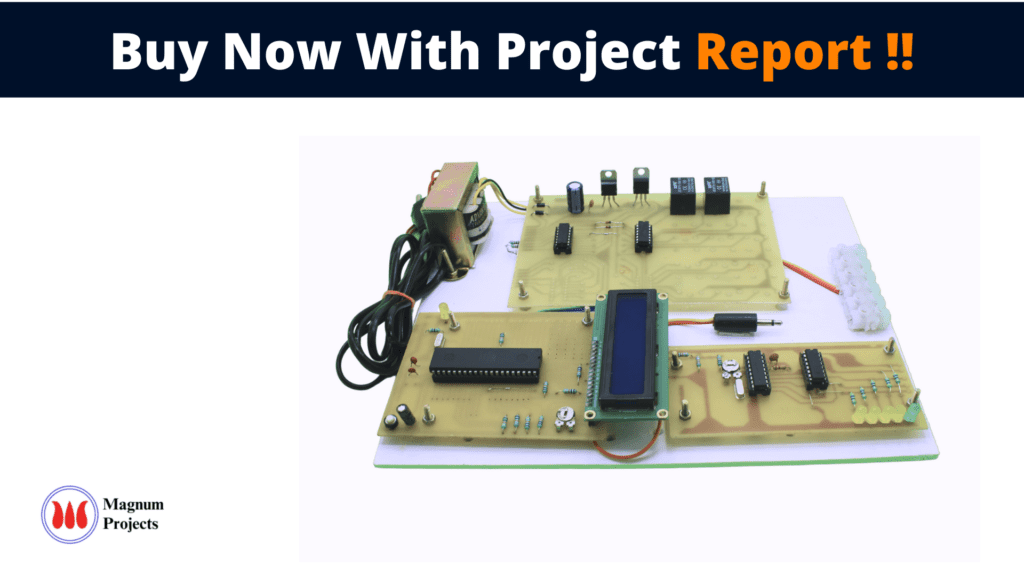Table of Contents
Intoduction:


Automation is today’s fact, where more things are being completed every day automatically, usually the basic tasks of turning on or off certain devices and beyond, either remotely or nearby. The control of the devices when completely taken over by the machines, the process of monitoring and reporting becomes more important. We are more and more relinquishing the power for simple but routine tasks while we need to maintain as much control as we can over the automated processes. Automation lowers human judgment to the lowest degree possible but does not eliminate it. Depending on the location of its usage, automation differs in its name as industrial automation, home automation, etc. With the development of low-cost electronic components home automation migrated from being an industrial application to home automation. Home automation, our point of concern deals with the control of home appliances from a central location. Market researchers claim that most homes will be equipped with home automation systems very shortly.


Block diagram explanation :
Power supply unit:
This section needs two voltages viz., +12 V & +5 V, as working voltages. Hence specially designed power supply is constructed to get regulated power supplies.
Buffers:
Buffers do not affect the logical state of a digital signal (i.e. a logic 1 input results in a logic 1 output whereas logic 0 input results in a logic 0 output). Buffers are normally used to provide extra current drive at the output but can also be used to regularize the logic present at an interface.
Microcontroller:
The 89C51 Microcontroller is the heart of this project. It is the chip that processes the User Data and executes the same. The software inherited in this chip manipulates the data and sends the result for visual display.
The general definition of a microcontroller is asingle-chip computer, which refers to the fact that they contain all of the functional sections (cpu, ram, rom, i/o, ports, and timers) of a traditionally defined computer on a single integrated circuit. Some experts even describe them as special-purpose computers with several qualifying distinctions that separate them from other computers.
Features Of Microcontroller :
- 8K Bytes of In-System Reprogrammable Flash Memory
- Endurance: 1,000 Write/Erase Cycles
- Fully Static Operation: 0 Hz to 24 MHz
- Three-level Program Memory Lock
- 256 x 8-bit Internal RAM
- 32 Programmable I/O Lines
- Three 16-bit Timer/Counters
Drivers:
This section is used to drive the relay where the output is the complement of input which is applied to the drive but the current will be amplified.
Relays:
It is an electromagnetic device that is used to drive the load connected across the relay and the o/p of the relay can be connected to the controller or load for further processing.
Indicator:
This stage provides a visual indication of which relay is actuated and deactivated, by glowing respective LED or Buzzer.
DTMF Decoder:
The DTMF decoder used is CM8870. It is used to decode the mobile’s audio signal, i.e., the keypad tone. When the user presses a button on the keypad of the mobile, it generates two tones at the same time. These tones are taken from a table comprising a row frequency and a column frequency. Thus the resulting frequency signal is known as the “Dual Tone Multi-Frequency” signal. A DTMF signal is an algebraic sum of two different frequencies, one from the row frequency (higher frequency) group and another from the low frequency (column frequency) group. The CM8870 decodes the received DTMF tone and then sends its equivalent binary code to the microcontroller. According to the program loaded into the microcontroller, the corresponding action starts.
Methodology:
The project consists of a set of GSM equipment via; GSM Mobile Handset & GSM Mobile Infrastructure. Though a mobile handset one can dial the assigned number or press the key in mobile when we want to turn ON or OFF the devices that are nothing but DTMF encoded signal, that signal is fed DTMF tone detection, and decoding is done by DTMF decoder. Based upon the program loaded into the microcontroller, it senses which button is pressed and corresponding actions take place. It acts by utilizing the DTMF signal. When the output of the relay driver is high, then the corresponding relay can be switched and controlled, thereby the control of devices that are connected to that particular relay can be made possible. These devices can be switched ON and OFF based on the program loaded into the microcontroller by the user.
Advantages:
- The circuit is very useful when you want to operate appliances kept at your home, sitting in your office.
- It can be used in industries for remote operation of devices.
Disadvantages:
If GSM fails to catch the network then failure of controlling the devices.
Applications:
- Automotive.
- Instrumentation.
- Medical electronic.
- Alarm systems.
- Industrial electronics.
- Remote metering.




